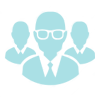Figure
Artwork Preparation
As you prepare your manuscript for submission to a scholarly journal, you will need to follow extensive guidelines for figures, making adjustments to the resolution, file type, size, colors, and font. You want to be sure that your figures follow these guidelines, remain as clear and legible as possible, and are properly prepared for publication. Researchers, who are experts in their fields, are not necessarily experts with the software and design skills needed to perfect figures for publication. So editEon has developed this service especially for scientists and researchers who are preparing for this crucial step in the publication process.
Our design specialists can help you with artwork preparation. Once you give them the data or images and the name of your target journal, they will prepare figures as per the journal guidelines. They can also edit or design your manuscript's line art to suit the journal's guidelines. This includes illustrations, graphs and charts. Alternatively, we can check whether your photographs conform to the target journal's guidelines and recommend a list of changes.
Service Checkpoints
Artwork preparation ensures that the figure guidelines are followed correctly, with reference to the following areas:
- Resolutions: All images should be supplied at a resolution which will allow reproduction at 300 dpi (usually) at the final size.
- Preferred Color: Some journals recommend that figure(s) should be in CMYK (Nature) while others recommend RGB (Cell). We can also convert images from color to black & white for submission.
- Figure Dimensions: Images need to be of a particular height or width to fit the single or double column layout of the journal. Usually, illustrations should be prepared in the dimensions they will be printed to avoid any misrepresentation.
- Halftones: Images that contain gray are referred to as halftones. Gray should be used in levels between 20% and 80%, with at least 20% difference between each level of the color, or it may become difficult to distinguish between different elements. Optimum resolution for halftones is 300 dpi when sized appropriately for print publication.
- File Size: Some journals have a limit on the file size of each figure (for example, images should not be greater than 10MB). We can tweak the file size as per the journal's requirements.
- Font Usage: We check the font type (most journals prefer Helvetica) and the minimum font size (for example, 8-point type size) used on the images.
- Line Weights: Graph lines, error bars, and outlines usually need to be at least 1/2 point in weight. This is because lines that are less than 1/2 point may disappear or be broken during printing. We can check your illustrations for legibility.
- File Format: Journals accept only particular file formats. We have the necessary file conversion software to convert images from the existing format to the format desired by the journal (for example, from PPT to TIFF).
Note: Figures containing text and lin -art that have been saved as pixilated images will need to be re-drawn to create high-resolution figures. For ethical reasons, graphs saved as pixilated images should not be re-drawn. To avoid this restriction, please submit files in the format in which they were originally created whenever possible.
Poster design and creation
Poster presentations are the workhorses of scientific conferences where a large amounts of varied data and ideas need to be shared simultaneously. A well-designed poster acts as a powerful tool in conveying your ideas clearly to a large audience. It should stimulate interesting discussions that help in providing unexpected insights that benefit not only the audience, but the presenter as well.
It is our responsibility and in best interest to create an eye-catching presentation that encourages the attendees to stop, look, read and ask questions. Some of our best tips have come from "spontaneous" discussions triggered by our clients' posters.
Our layout designers are highly experienced in arranging the contents of your manuscript in a condensed format, into visually appealing posters of various sizes (as per your requirements). We will also send you the electronic copy of the poster so you can print it directly.
How our poster creation and design team works:
- Chooses or designs template of desired size.
- Selects a suitable layout.
- Designs headings, text boxes, and graphic objects.
- Decides the appropriate size of text and figures.
- Optimizes the color combinations.
Designing and developing promotional materials
Promotional materials will go a long way in helping you gain the desired results when it comes to the success of your business. Be it business cards, flyers, brochures, postcards and posters, or promotional material intended for medical research results, our team has the expertise to create lively elements of design that strike a perfect balance with brilliant ideas, and help your target market take notice of you despite the competition.





